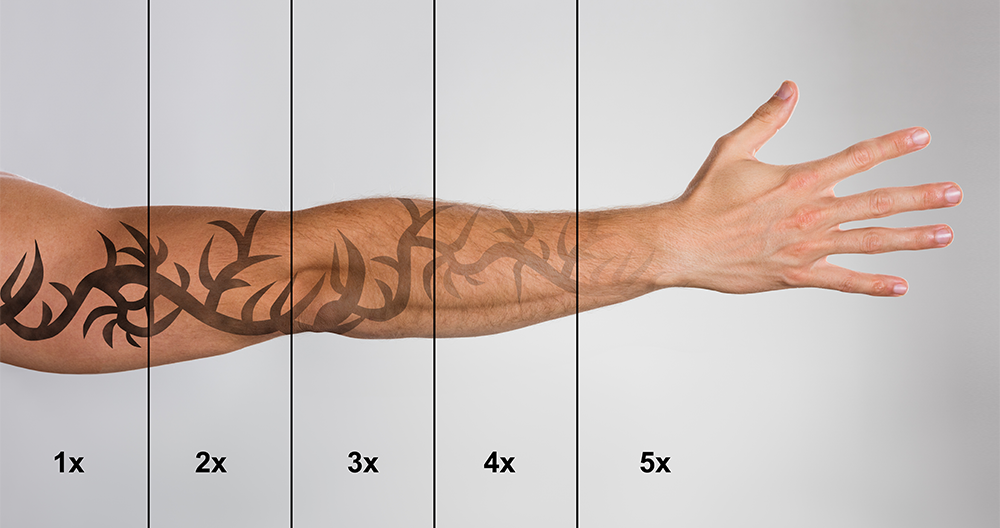How many sessions will I need for Laser Tattoo Removal?

This is the most frequent question we get asked…
The number of sessions a client will need to remove their tattoo, is dependent on many factors, some of which are outside of our control. Namely, these factors are:
- Age of client
Skin renewal is slower for older clients. - Immune system of client
A stronger immune system will be able to remove the broken down ink particles more efficiently and heal the skin quickler and more efficiently. A compromised immune system during the healing phase can affect skin healing and the outcome. - Type of ink used
We don’t know what inks have been used and what ingredients are present. We do a patch test first to ensure we are not dealing with what is known as “resistant black” ink which doesn’t respond to laser. This is extremely rare. However, some inks will respond better to laser than others. - Age of tattoo
The older the tattoo, the more your body has accepted and engulfed the ink, as well as taken it deeper in to the skin. So the older the tattoo, the more difficult it is to remove. - Tattoo colours
Black is the easiest colour to remove (as long as it isn’t resistant). Red is also fairly easy to remove, although it can cause blistering due to the iron oxide content. Darker colour (blue / brown etc) respond well. Laser is not suitable for light colours such as yellow, white, skin tone colours. Green is notoriously difficult to remove, but any green remaining that won’t budge can be treated with chemical removal. - Client’s lifestyle
If a client is active, exercising regularly and drinking lots of water, the ink will flush out the system faster. Also sunbathing will help fade the ink faster (which happens naturally with a tattoo over time anyway). - Client adhering to aftercare
In order to avoid scarring, clients are required to treat the area with great care. If this is followed, clients can come back for additional treatment 6-8 weeks later. Not adhering to guidelines will delay this process and possibly cause irreversible damage. An example of this would be to avoid knocking the treated area, scratching, or picking any any scabs. Sun exposure is also a massive no-no before or after treatment for several months – this can cause pigmentation changes (hypo- or hyper- pigmentation). All aftercare is explained verbally and provided in printed format.
It is important not to rush the laser tattoo removal process, as overtreating the area can cause pigmentation issues and / or scarring. A sufficient amount of time needs to be left between sessions to allow the skin to fully heal first (even if it looks ok on the surface). This varies between clients, depending on their immune system. Also please take note that tattooed skin is likely to be scarred from the original tattoo. This might not be apparent until the ink is removed. It is possible for skin to go back to normal, depending on the factors mentioned above, but it is common for skin never to be the same as it was – the texture may be slightly different, and there may be some subtle pigmentation changes – we simply can’t predict the final outcome. A patch test also doens’t show long-term outcomes – it is merely an insurance requirement to ensure nothing bad happens within 24 hours.
Given the above, it is not possible to predict how many sessions are required to remove a tattoo. It isn’t possible to say whether the tattoo ink will go completely, as it is up to your body how well the ink is released and dealt with following laser. It is however, possible to completely remove a tattoo with the skin remaining normal looking. Most clients are just happy to not have the original tattoo any longer, even if that means there are some slight skin changes following treatment. A tattoo can be removed anywhere from 3-15 sessions. It is also possible to just fade a tattoo sufficiently if you wanted a cover-up tattoo in the same area. Your practitioner can give you an estimate on how many sessions you may need, based on similar looking tattoos, age of tattoo, your age etc, but this is only an estimate and they can’t tell how your body will respond once treatment has started.

